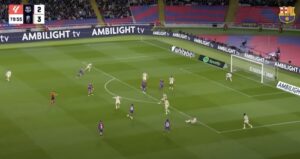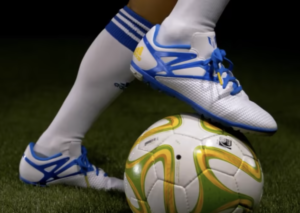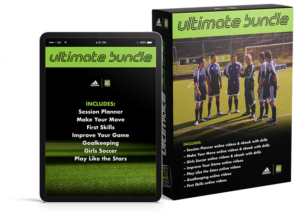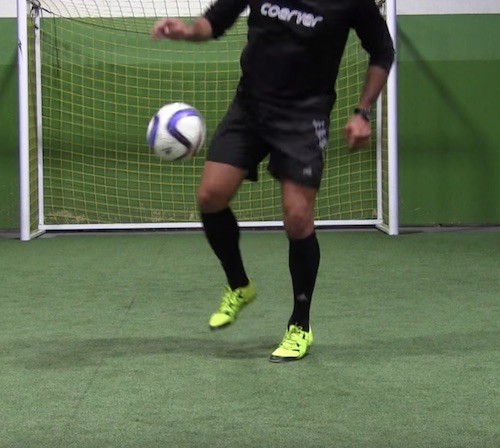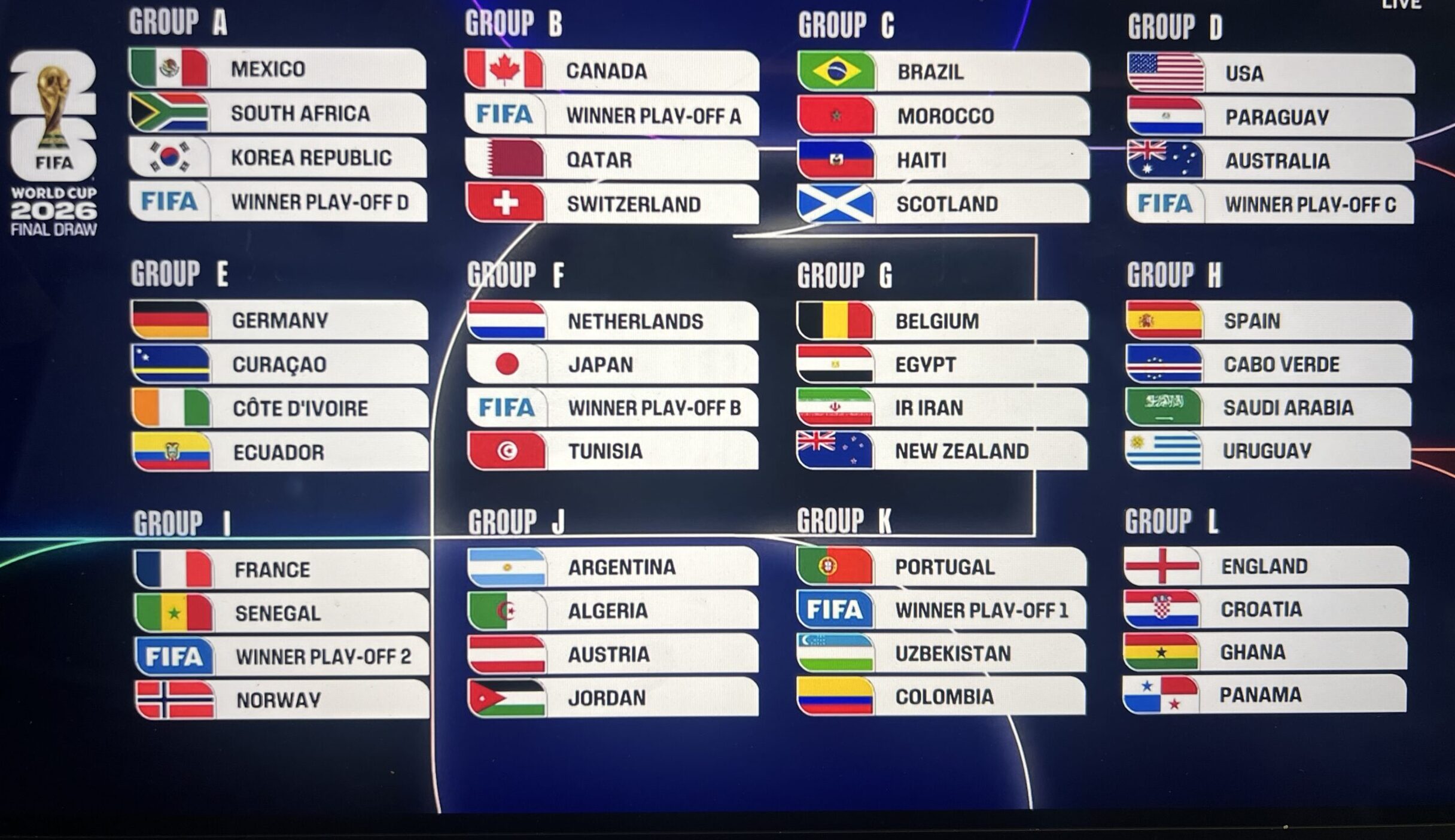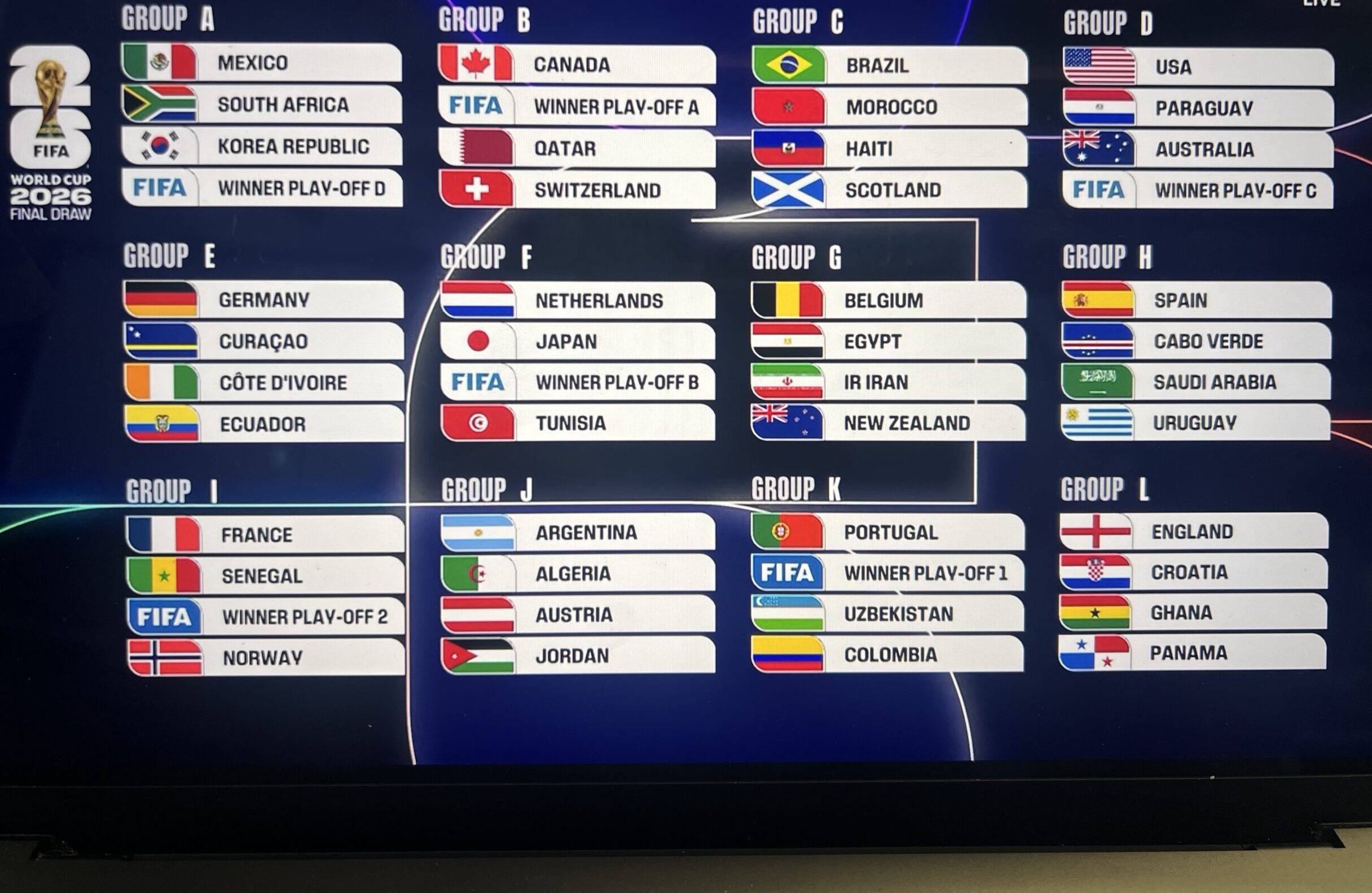Coerver juggling progression routine for all players: Juggling in soccer has an amazing impact on improving your first touch, so the ball goes right where you want it to go when you control it. In general, juggling just helps to make all your other touches on the ball better. Good jugglers always have a lot of confidence about their ability to control the soccer ball. To get good, you have to work on this at home everyday. It doesn’t take too much time though, just consistently working on juggling on a daily basis.
Working on juggling also helps with your focus on soccer and helps you to develop the habit of training on your own, “when no one else is watching,” what all good soccer players do. Younger players should start with “Keep Up”. Here, the soccer ball is allowed to bounce once between touches. Then take two touches between bounces, then three, then four. After you can do this most of the time, switch to juggling – keeping the ball in the air the whole time. Once you switch to juggling, try to make every touch the same. – instep juggling with ankle locked. And never catch the ball in your hands; getting that last extra touch helps to make you better.
The Coerver juggling progression has six levels. You move on to the next one when your score reaches 100. The hard part is getting to about 15 touches at any level. You won’t get a lot of extra benefit from making more than 25-30 in a row at any level. But it takes only a little more work to make that 25 into 50, which multiplied by 2 gives that magic triple digit score. “100” is a much bigger accomplishment, without a whole lot more effort.
You have to be patient. The next goal after you can do 5 touches is not 15. It’s six! You also have to be persistent. 15-20 minutes of juggling 3 times a week works better than working for an hour once a week. No matter what, record your best scores every week. We’ve suggested goals that you should reach at different ages. But we know of players who finished the Coerver juggling progression during their U11 year. Needless to say, their ball control was awesome!
Learn more at: Coerver Coaching
Coerver Juggling Progression Routine
Level 1: Any Touch. Start with the ball in your hands. The test: take 4 tries, add best two together. That’s your score. (Note: only 4 tries, no mulligans, and if you touch the ball with your hands or catch it, the score for that turn is “0”.) Every touch counts, even the unintentional one off of the face or chest. Goal: a score of 100 by end of first season of U11.
Level 1B: Any Touch. The test: take 4 tries. The best of the four is your score. Try to get 100 touches in a row. Goal: a score of 100 early in 2nd season of U11. Even when you move on to the next level, do this test every month or so. Once you get to 150 touches, limit yourself to 3 tries, at 250 limit to 2 tries – but if you beat your best on the first try, stop there.
Level 1C: “Mostly Feet“. The test: “4 tries, best 2”. Successive touches that are not on the feet don’t count – but don‘t end the turn. Thus “foot, thigh, high, foot, foot, foot, thigh, thigh, thigh, foot, foot” is a score of 8. Goal: a score of 100 by end of your U11 year. From this point on, start with the ball on the ground.
Level 2: Feet Only. The test: “4 tries, best 2”. Only touches on the feet count, any other touch ends the turn. Goal: a score of 40 by the end of the U11 year, 100 by middle of U12.
Level 3: Weak Foot Only. The test: “4 tries, best 2”. Only touches on the weaker foot count, any other touch ends the turn. Note: Start to test this every week about 2/3 of the way through the first year just to get working on the off foot. Goal: 50 by middle of the U12 year, 100 by end of that year.
Level 4: Progressive Juggling. The test: take 4 tries. The best of the 4 is your score. Progressive Juggling follows this pattern. “right(1), left, left(2), right, right, right(3), left, left, left, left(4), … All touches must be with the feet; any variation in the pattern ends the turn. The Women’s National Team standard was reported to be 13. Goal: 15 (=105 touches) by end of the 3rd year.
Level 5: Body Parts. The fourteen parts are: four parts of each foot (instep, inside, outside, and heel), each thigh, top of each shoulder, chest, and head. Players collect as many body parts as possible in any order on a single turn. Each body part only counts once until all 14 are collected, even if the player selects to use that part multiple times. Once all 14 are completed on a turn, the player can begin a 2nd collection on that same turn. Players take as many turns as possible in 2 minutes (+extra time on last turn). Record best turn.
More Coerver Juggling: Head Juggling. This is also something to do every week, but it can wait until the middle of the U11 year or even until U12. Level 1 would be to get to 50 in “4 tries, best two”. Level 2 would be to get to 50 in a row. But head juggling is a skill that can wait until youth soccer players are more developed – so even older than 12 is fine.
Around the World. Foot to thigh to head to other thigh to other foot to first foot, etc. (add shoulders for the “Long Trip”.) Rainbow. The number of times a player can pop the ball up over the head, turn and catch the ball on feet to continue (limit number of touches between rainbows). Sitting. or Standing to Sitting to Standing.
NOTE TO COACHES. Be persistent. Test every week and record the scores. A small reward new personal bests works wonders. It’s amazing how a lemon drop can take on the status of a Gold Medal!
Learn more at: Coerver Coaching
New: Coerver Coaching’s Online Youth Diploma
Want Soccer Practices That Players Enjoy? You’ll get all this & much more from this coaching course. Take it from the comfort of your home. Don’t delay joining & furthering your education in technical skills training. Instant Access Now!

